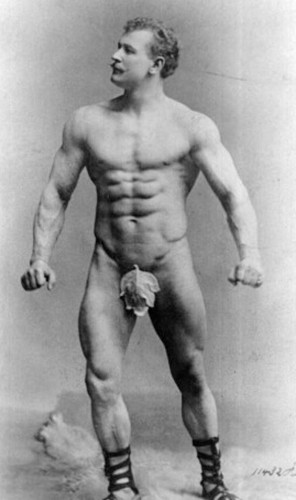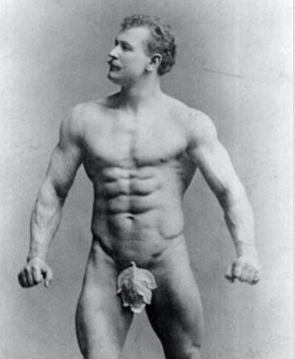THE MUSCULAR MALE PHYSIQUE can arrest observers’ gaze involuntarily. Research by social psychologists indicates that muscular male bodies capture and hold the attention of spectators both male and female. Whatever our æsthetic sensibilities, the unconscious mind seems to think the mesomorphic or muscular body type is worth looking at.
Since at least the mid-20th century, a drive for muscularity has spawned the activity of bodybuilding, which styles itself a sport, but some commentators consider an art form (Shusterman, 1999; Sedacca, 2015). Systematic resistance training grounded in biomechanical engineering has made it possible for modern humans to transform their bodies in ways that were previously unimaginable. It didn’t take long for gay men to notice the potential of bodybuilding to help them develop bodies that looked like those of superheroes. Muscle-bound 1950s movie stars like Steve Reeves—famous for playing the title role in Hercules Unchained—attracted a large gay following. Later, the best-known competitor in men’s bodybuilding, Arnold Schwarzenegger, a seven-time Mr. Olympia, posed nude in 1977 for the gay-inflected magazine After Dark.
During this era, Alan Klein, a professor at Northeastern University, conducted a six-year ethnographic study (1979-85) of the bodybuilding subculture in Venice Beach, California, the Mecca for enthusiasts then and now. While he described a thoroughly heterosexual environment, he identified gay men as a crucial component of the fan base for competitive bodybuilding, especially in the early years. Gay spectators were a loyal audience who praised and appreciated sculpted musculature at a time when the wider public did not.
Research confirms this fascination with brawn among gay men. Levesque and Vichesky (2006) concluded that the muscular male image represented the dominant æsthetic ideal for the men they studied. A 2008 study by Swami and Tovée compared gay and straight conceptions of male attractiveness and found that the gay subjects tended to favor more pronounced upper-body musculature. In his 2008 book Muscle Boys: Gay Gym Culture, Erick Alvarez catalogued the various cultural contexts in which the gay exaltation of muscle has found expression, including the Greek gymnasium, Renaissance sculpture, the physique magazines of the 1950s, the circuit party phenomenon of the 1990s, the use of steroids, and today’s “muscle bears.”









Discussion1 Comment
Interesting read. What about gay men who do not subscribe to the muscled ideal and tend to prefer a more natural body type?